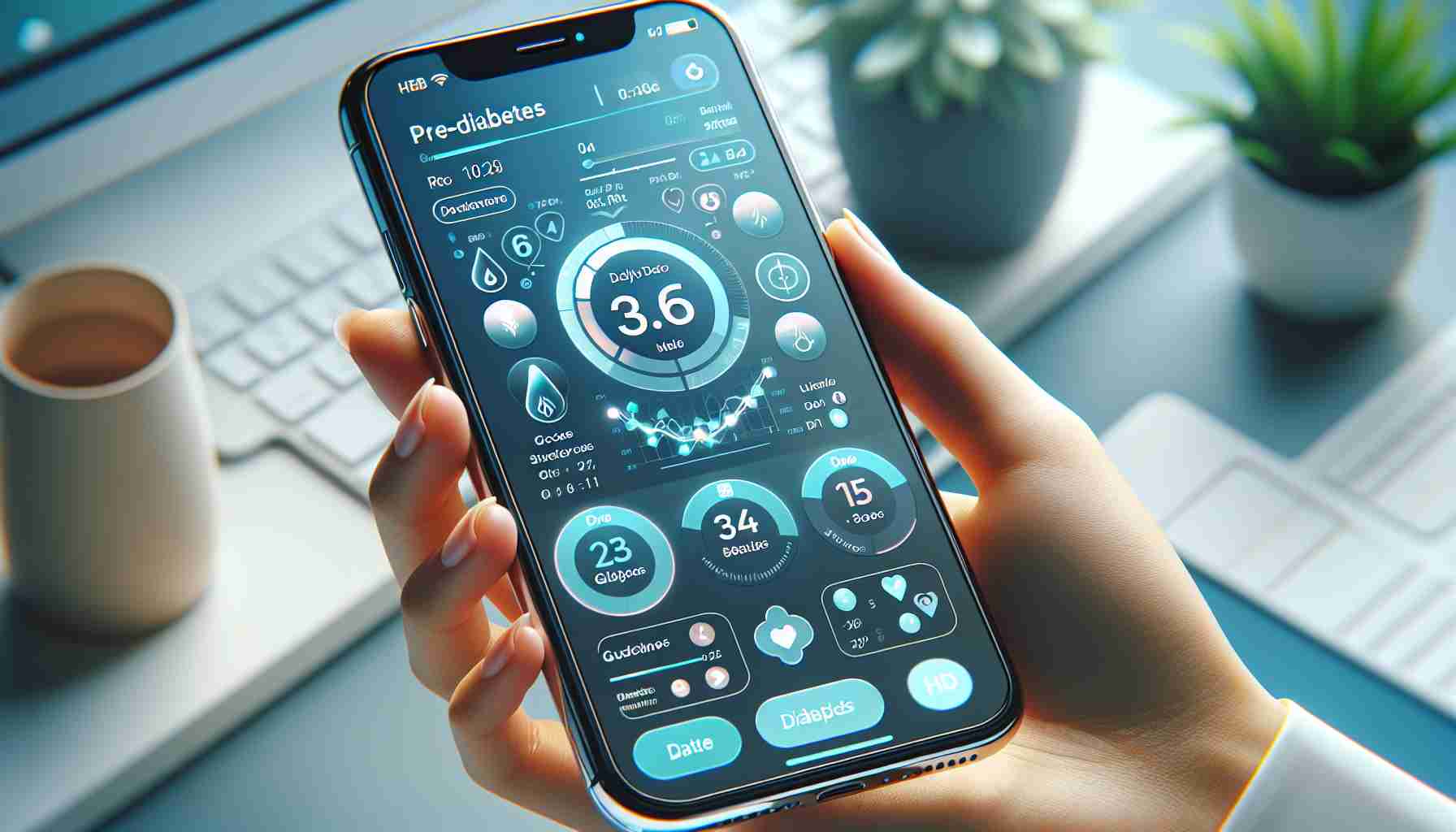A recently conducted trial underscores the potential of digital interventions in managing pre-diabetes symptoms. Researchers have developed a unique program that integrates lifestyle coaching via a mobile app with intermittent glucose monitoring. This approach aims to improve blood sugar control and support weight loss for individuals at heightened risk of developing type 2 diabetes, aiming to alleviate the burden on healthcare systems.
During the 12-week trial, participants were selected based on specific risk criteria such as elevated hemoglobin A1c levels and body mass index (BMI). They were then divided randomly into two groups: those using the smartphone intervention (App) and a control group without the digital tool (C).
The study population comprised 168 subjects, predominantly male (80.4%), with an average age of 48.1 years and a mean BMI of 26.6 kg/m2. There were 82 participants in the App group and 86 in the control group. The key metric of success was the duration of time participants maintained their blood glucose within the target range of 70-140 mg/dL.
Results showed that at the end of the trial, those in the App group had notably better blood glucose control. Their time within the optimal glucose range increased significantly compared to the control group. Additionally, the App group members also saw a reduction in BMI, suggesting that the app may facilitate effective weight management strategies.
This promising intervention promotes enhanced glycemic control and BMI reduction, indicating a step forward in pre-diabetes care. The evidence suggests that such digital tools could be crucial in preventing the progression to type 2 diabetes, though further long-term studies are needed.
Pre-diabetes is a metabolic condition characterized by higher-than-normal blood sugar levels that are not high enough for a diagnosis of diabetes. According to the Centers for Disease Control and Prevention (CDC), more than 88 million American adults—approximately 1 in 3—have pre-diabetes, and more than 84% of them are not aware they have it. Using a smartphone app to manage pre-diabetes is part of a broader trend called digital health or mHealth, which includes the use of digital technologies for health monitoring and intervention.
Key Questions and Answers
Q: What is the significance of managing pre-diabetes?
A: Managing pre-diabetes is crucial as it helps in halting or delaying the onset of type 2 diabetes, which can lead to severe health complications like cardiovascular diseases, nerve damage, kidney failure, and blindness.
Q: What are the typical lifestyle changes recommended for pre-diabetes management?
A: Common lifestyle changes include maintaining a healthy diet, engaging in regular physical activity, losing weight if overweight, and managing stress.
Q: Are there any challenges with using smartphone apps for pre-diabetes management?
A: Challenges include ensuring user engagement, privacy and security of health data, and the need for the app to be adaptable to different user needs and literacy levels.
Q: What makes digital interventions in pre-diabetes management a contemporary topic of interest?
A: The rising prevalence of pre-diabetes and diabetes, along with the accessibility of smartphones and advancements in digital technology, makes digital interventions timely and relevant.
Key Challenges and Controversies
One of the challenges of digital interventions is ensuring long-term engagement of users since maintaining lifestyle changes can be difficult over time. Moreover, disparities in access to technology and digital literacy can limit the reach of such apps to populations that may benefit the most from these interventions. Privacy and security concerns regarding personal health data are also significant considerations.
Advantages and Disadvantages
Advantages:
– Accessibility: Smartphone apps can be used anytime and anywhere.
– Personalization: Apps can be tailored to individual needs and progress.
– Real-time feedback: Users may receive immediate information on their blood sugar levels and activity.
– Cost-effectiveness: Digital tools may be less costly than traditional in-person interventions.
Disadvantages:
– Data privacy concerns: Collection and storage of health data pose privacy risks.
– Digital divide: Not everyone has equal access to smartphones or the internet, which might create disparities in healthcare.
– User engagement: It may decrease over time without proper motivation or incentives.
– Depersonalization: Lack of face-to-face interaction may not be suitable for some individuals who prefer or require in-person support.
For additional information on pre-diabetes management and digital health interventions, you may visit these credible sources:
– Centers for Disease Control and Prevention (CDC)
– World Health Organization (WHO)
– American Diabetes Association (ADA)
Please note that the links provided direct to the main pages of organizations known for their work in health, where you can search for more detailed information about pre-diabetes and digital health interventions.
The source of the article is from the blog coletivometranca.com.br
